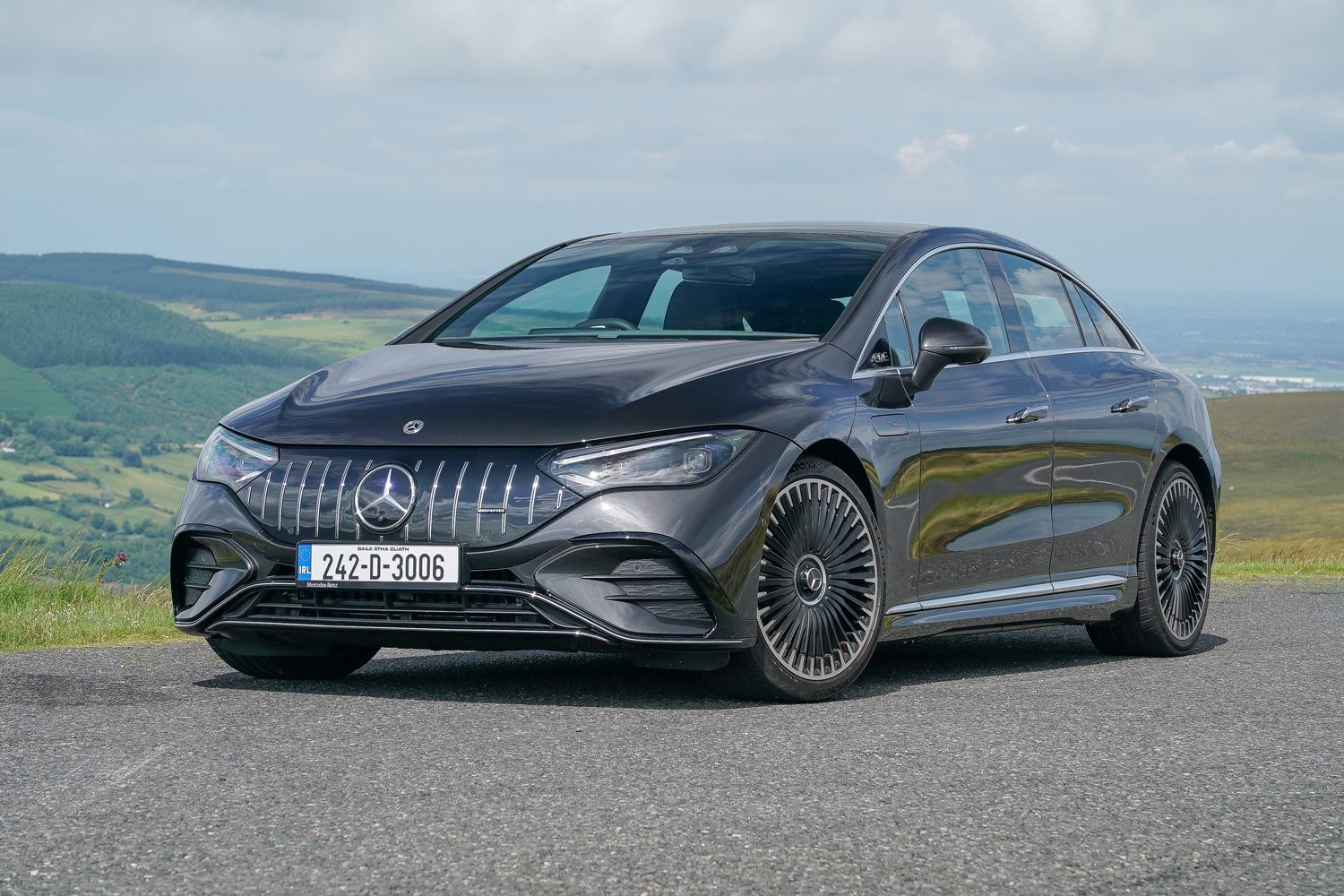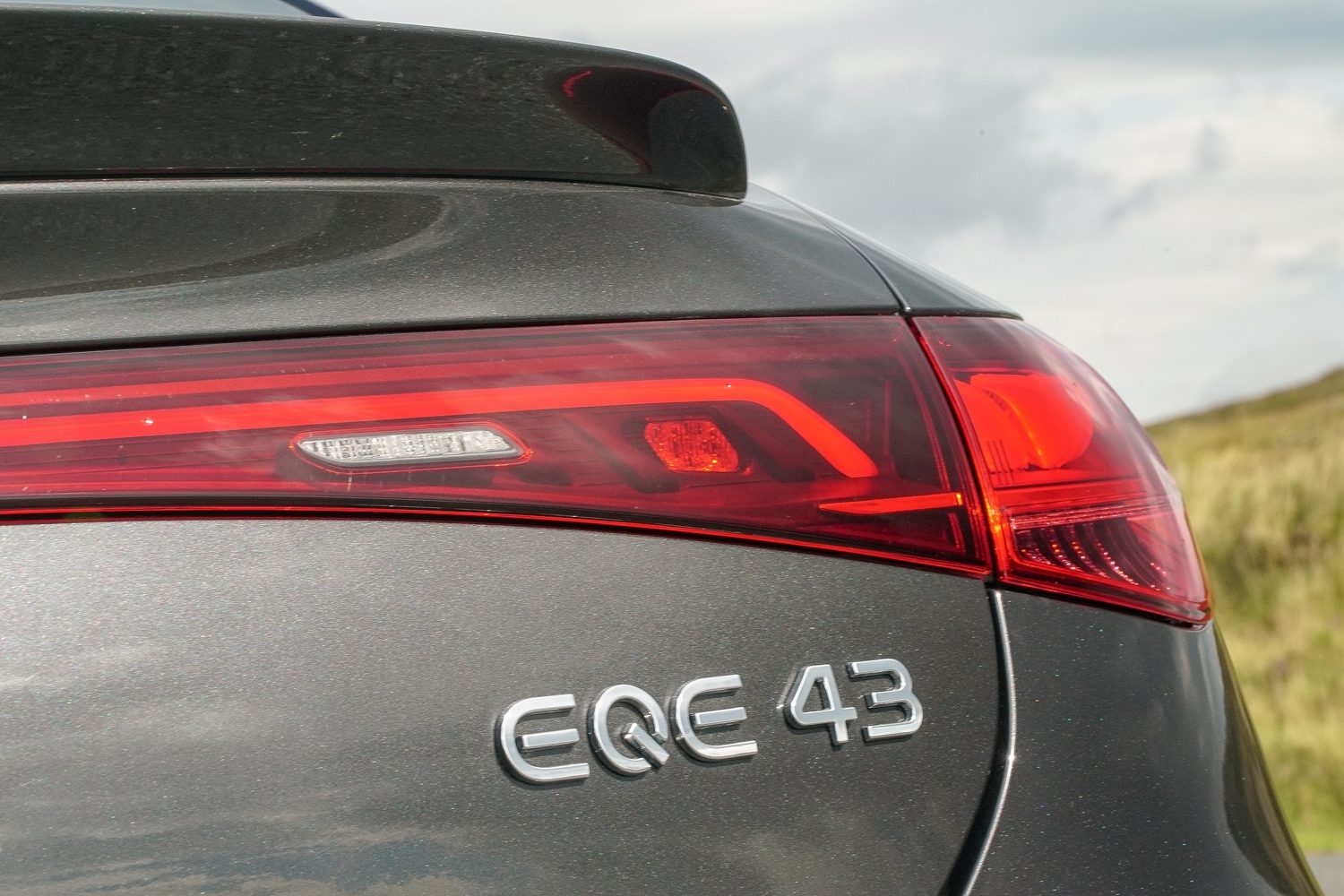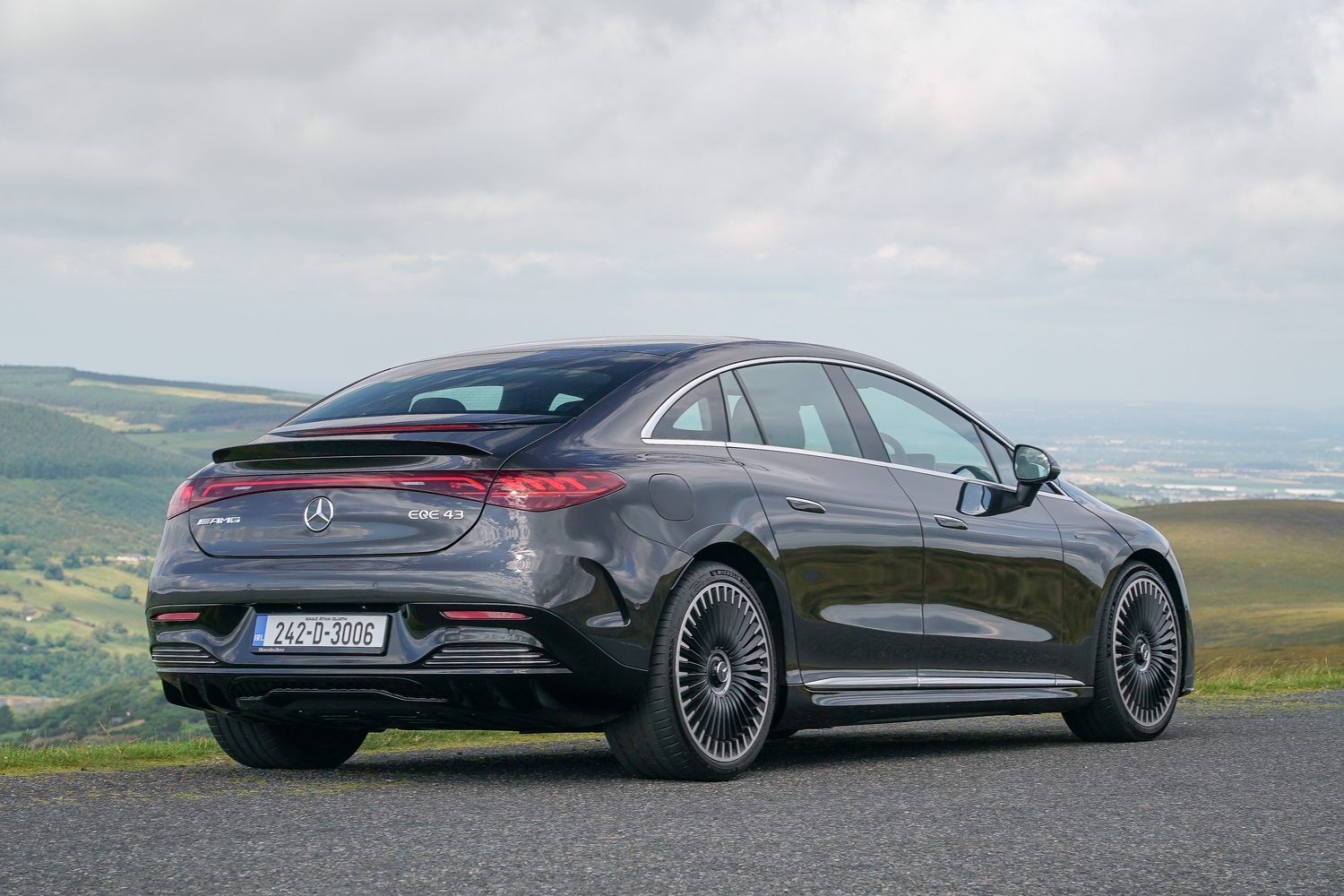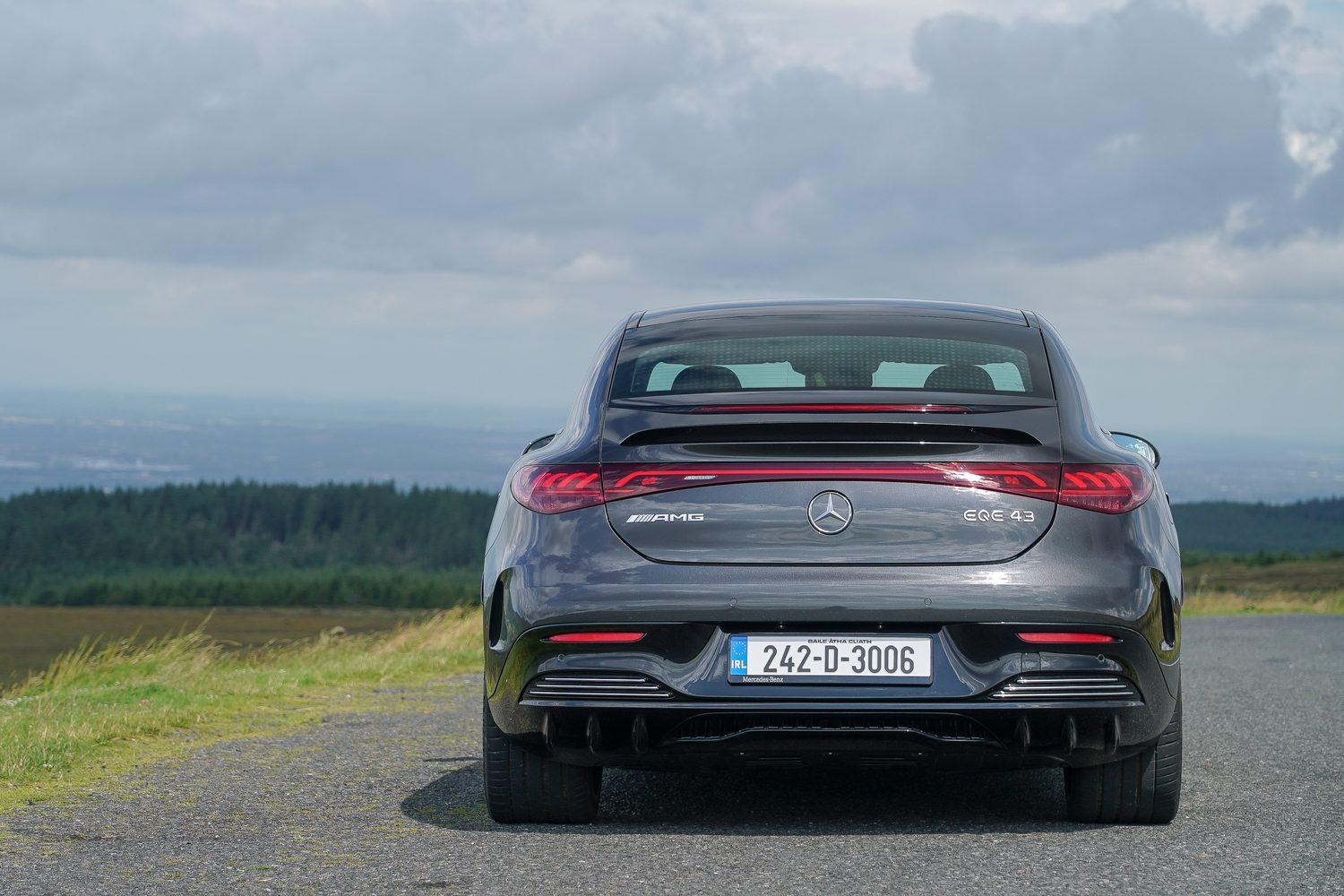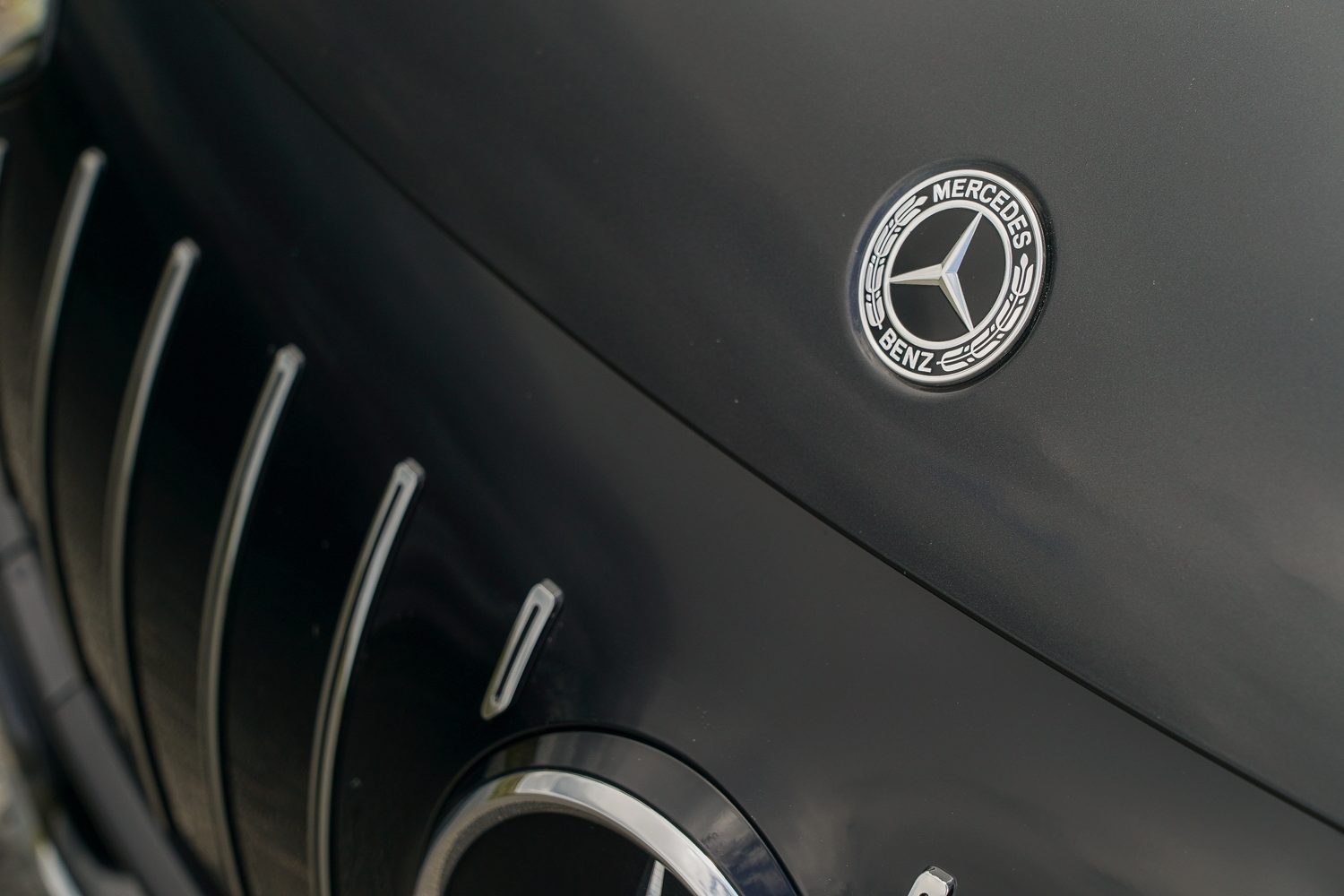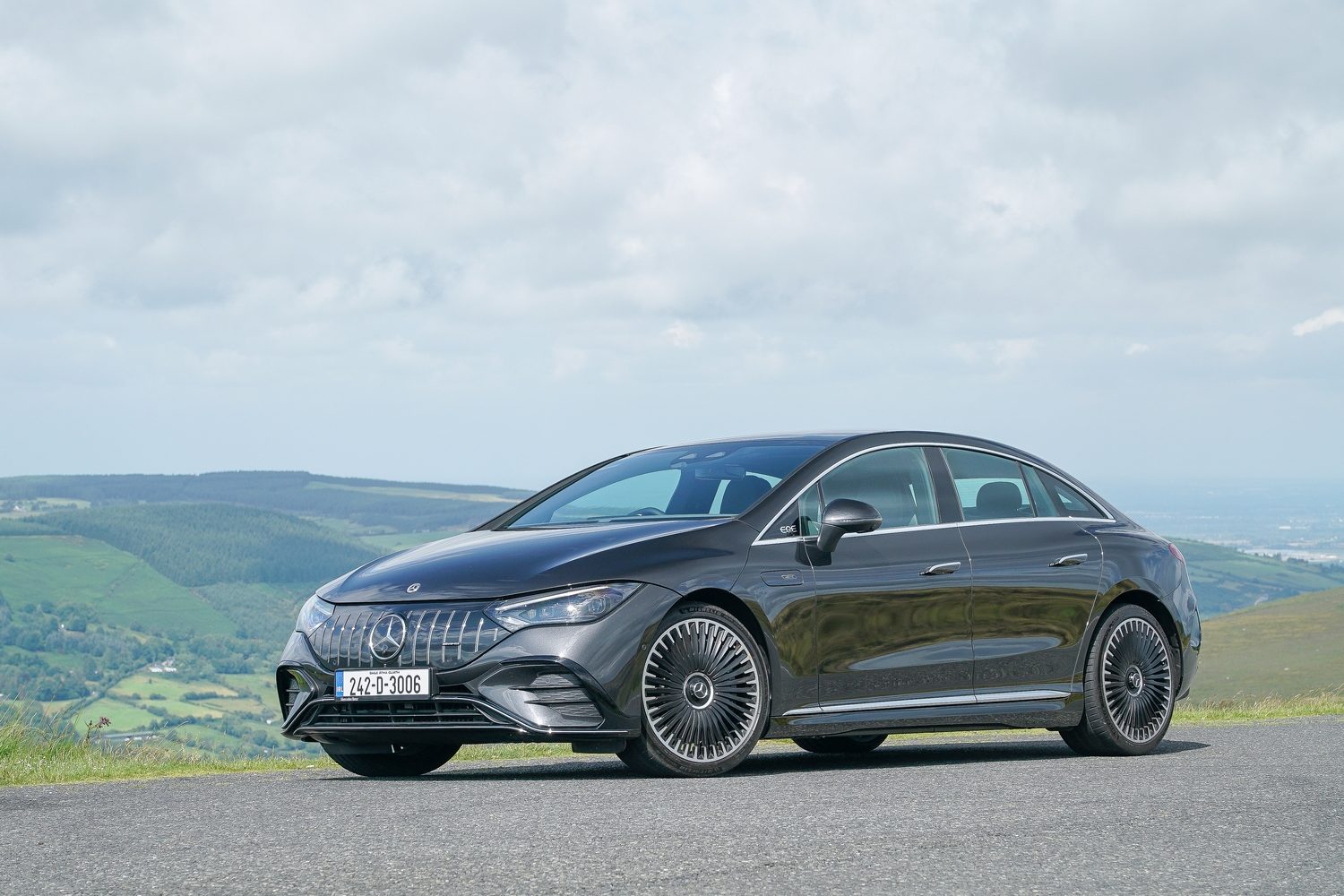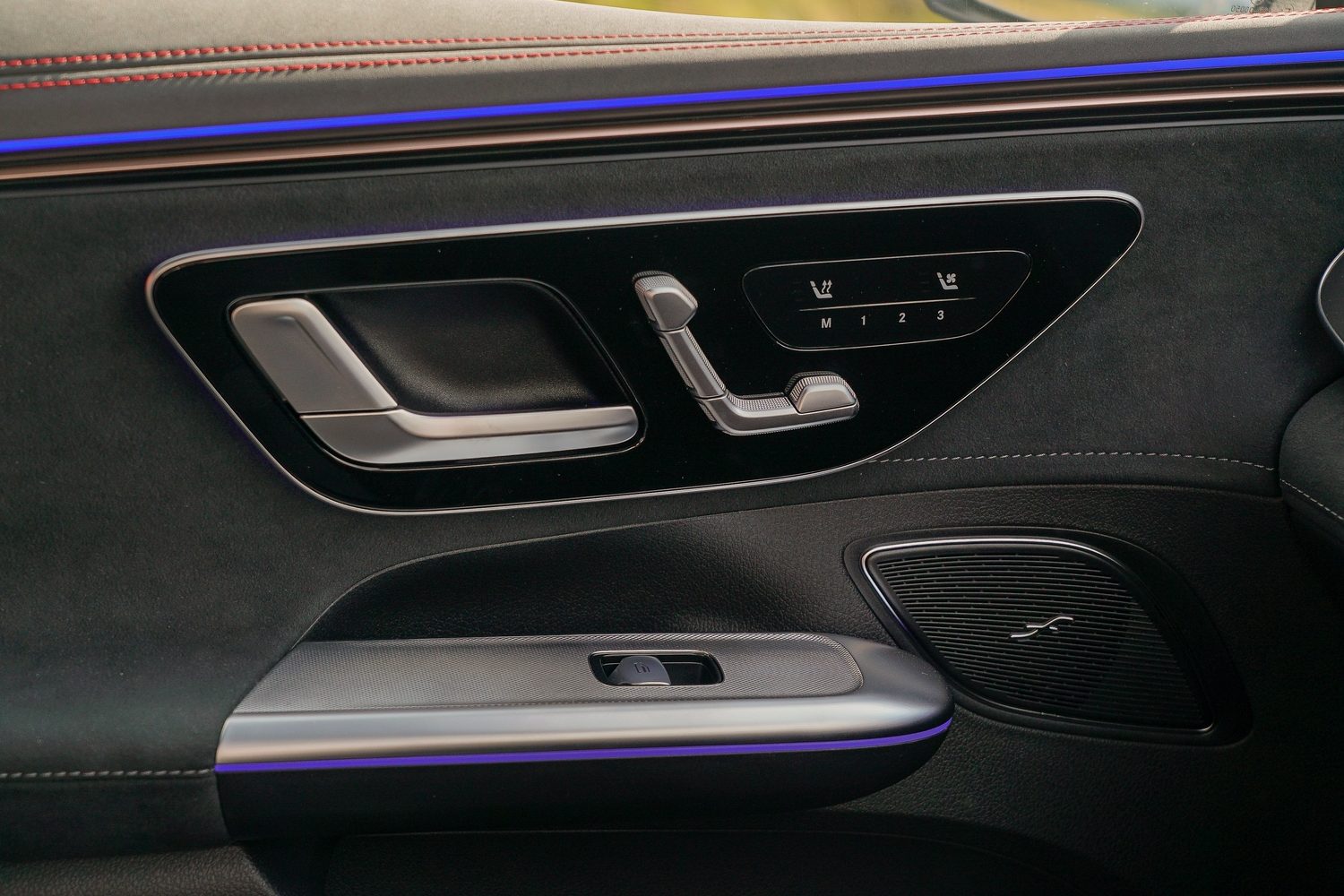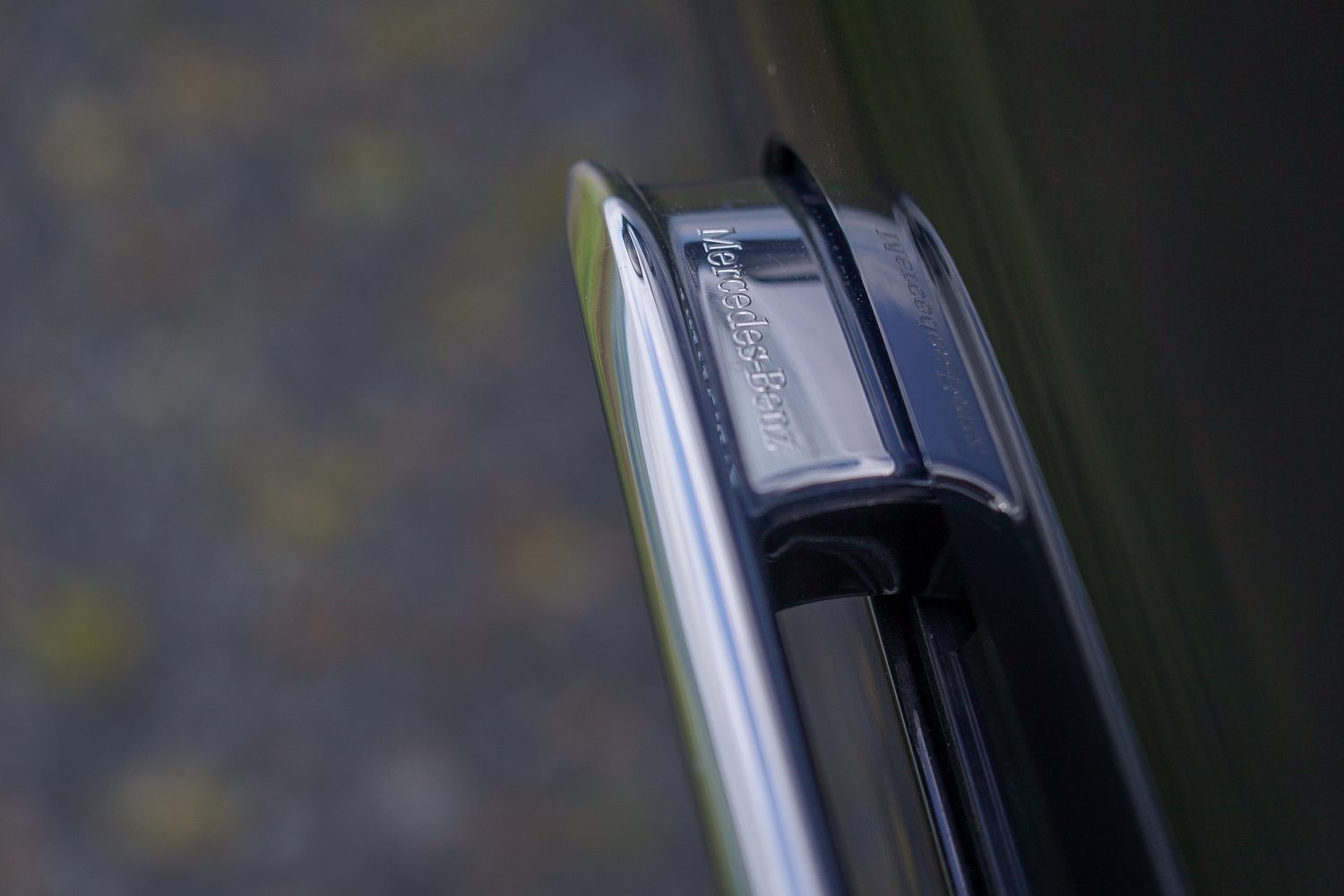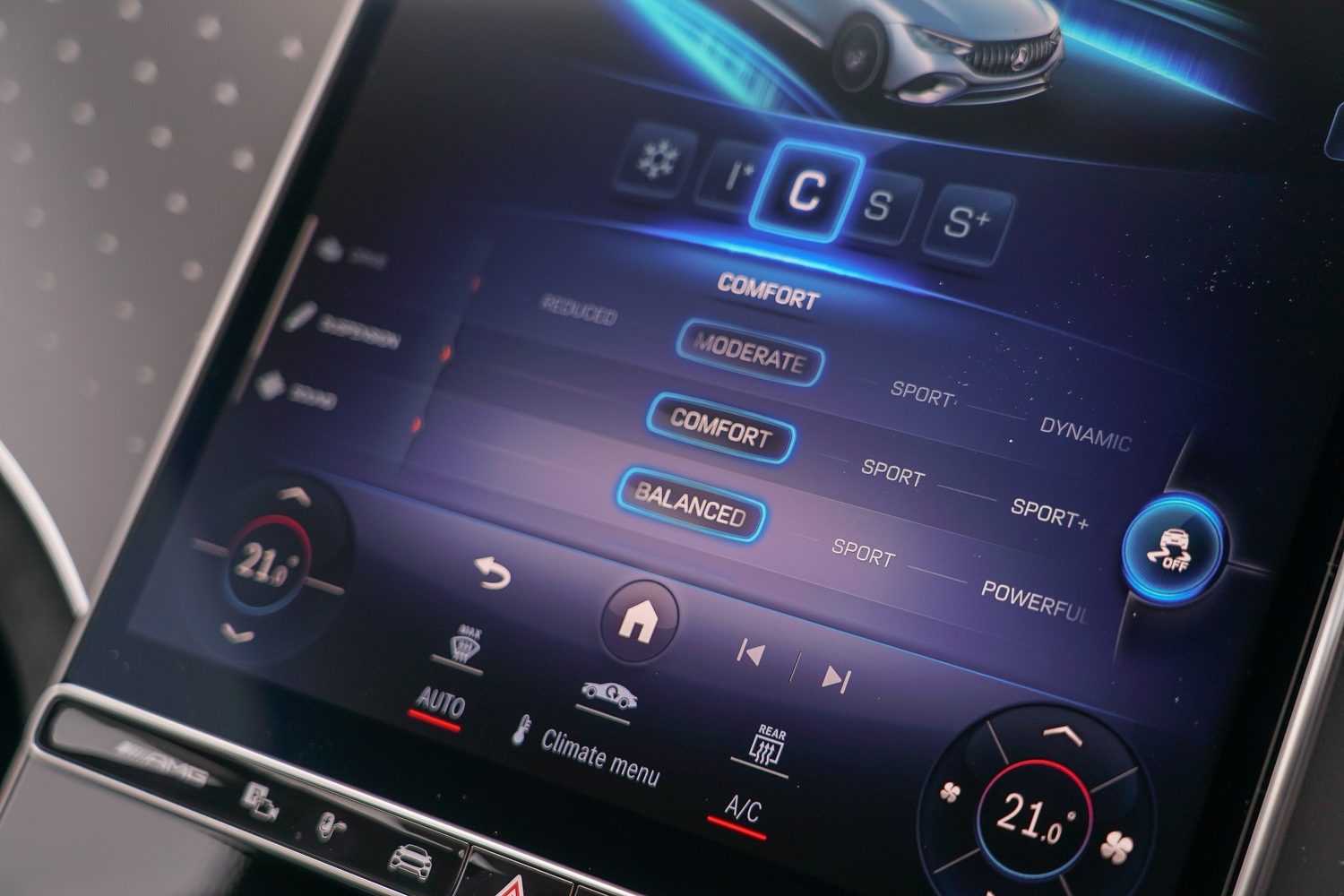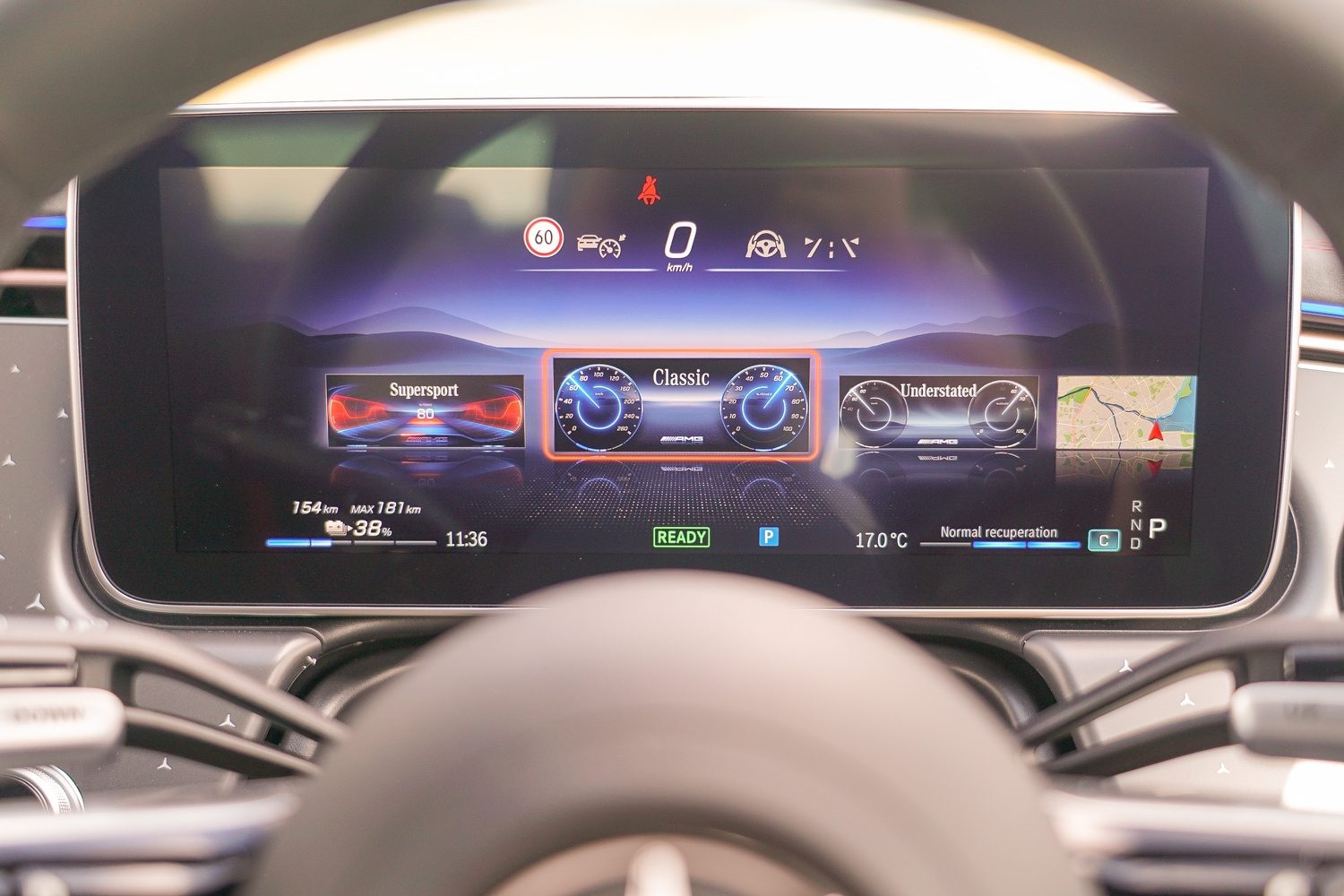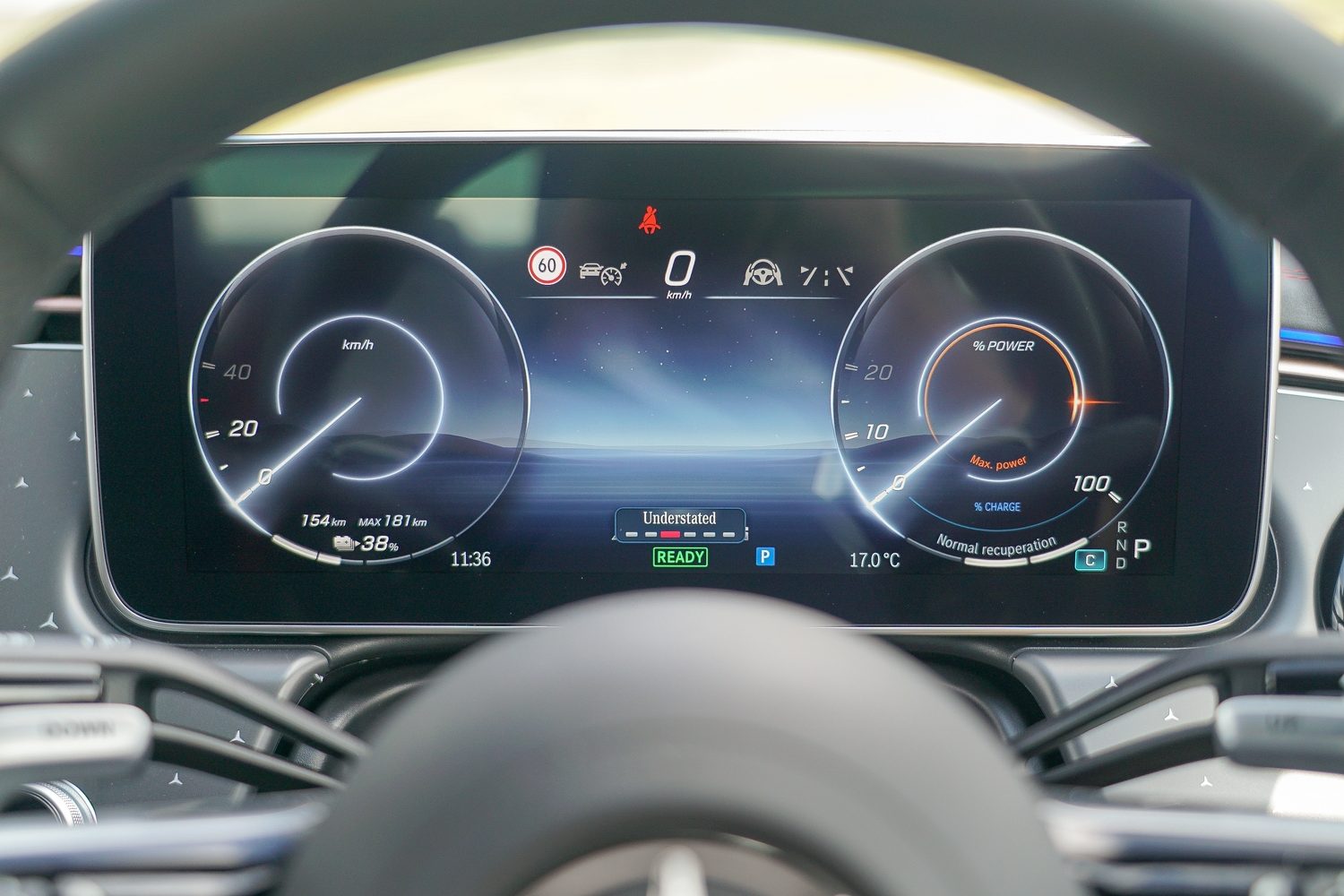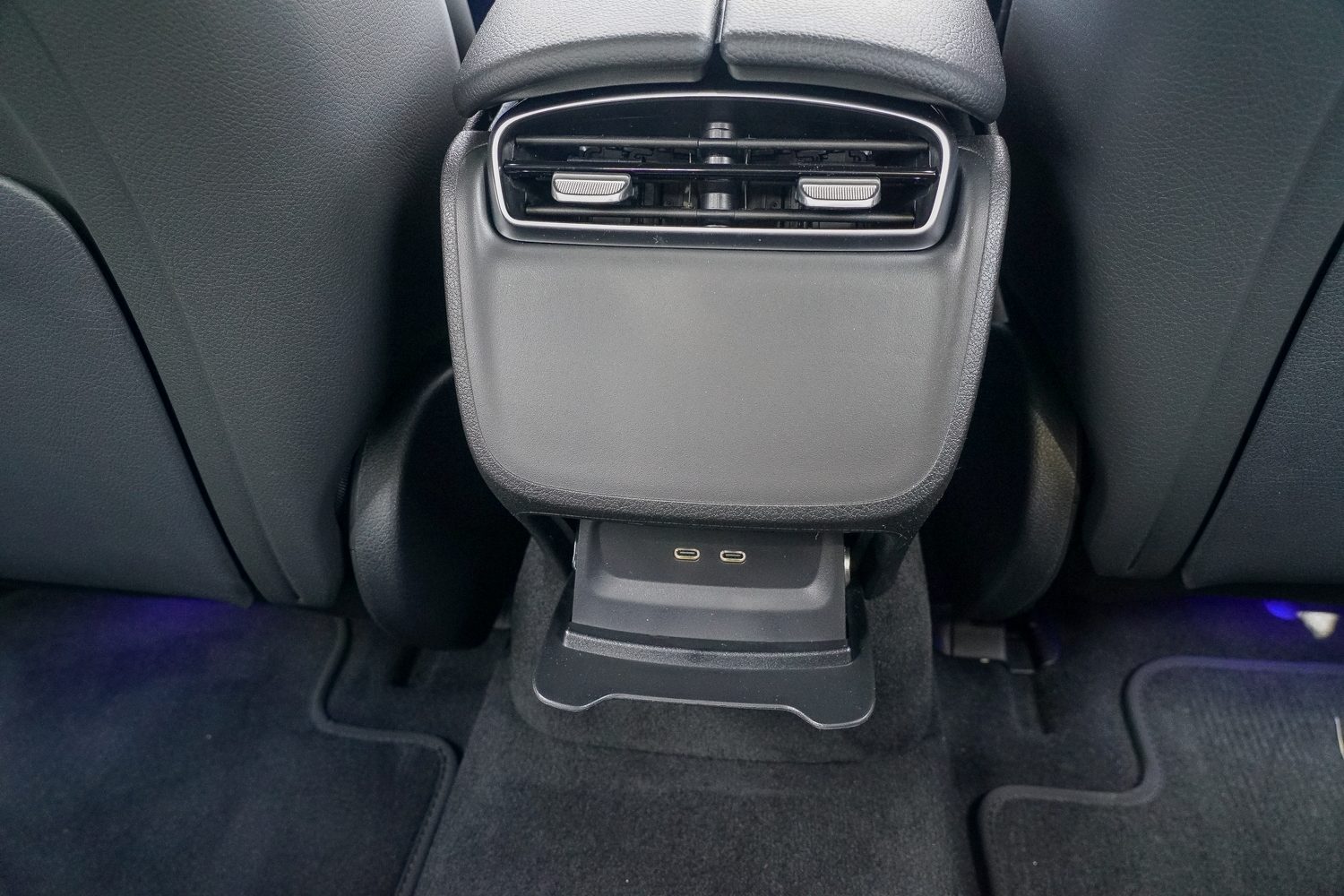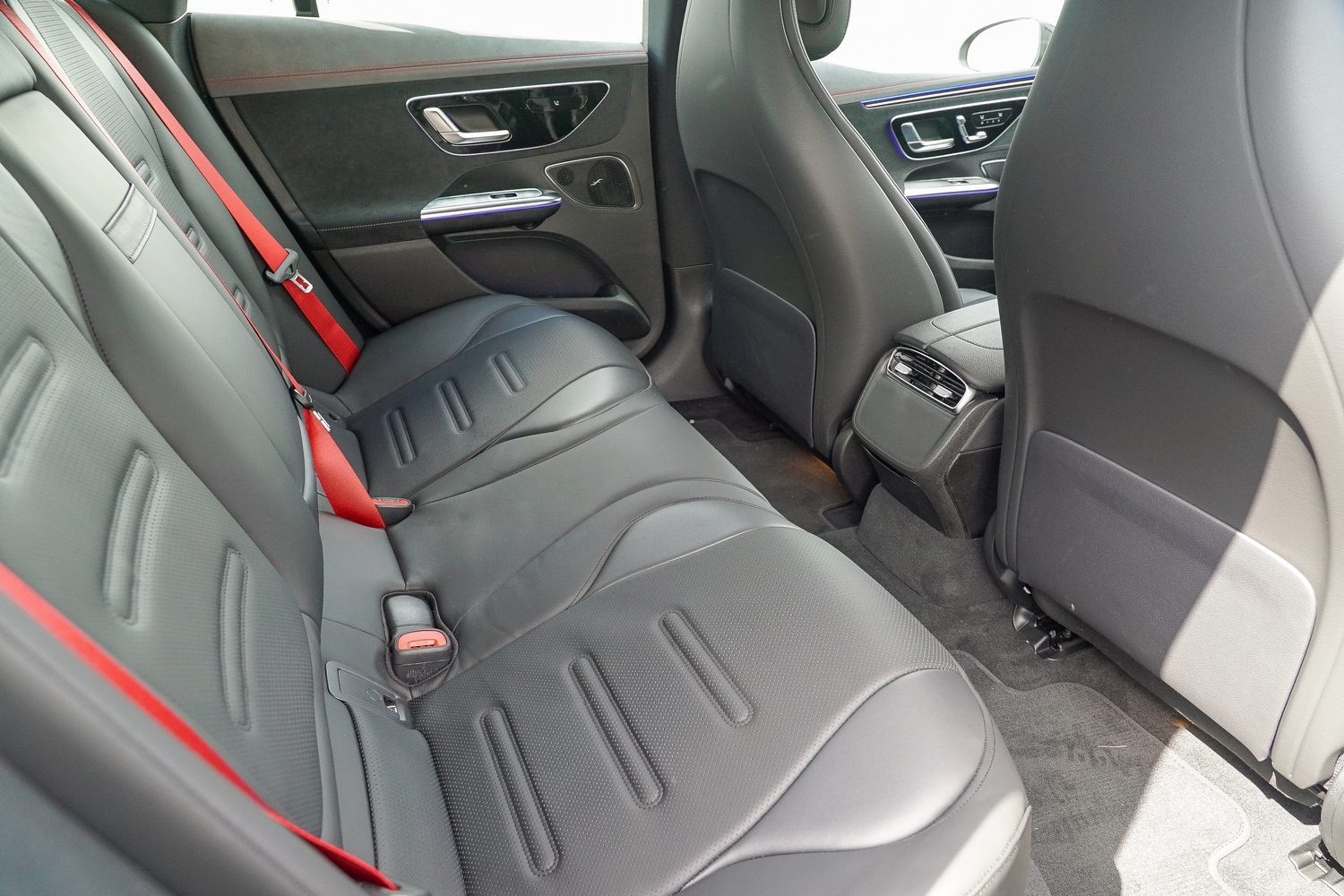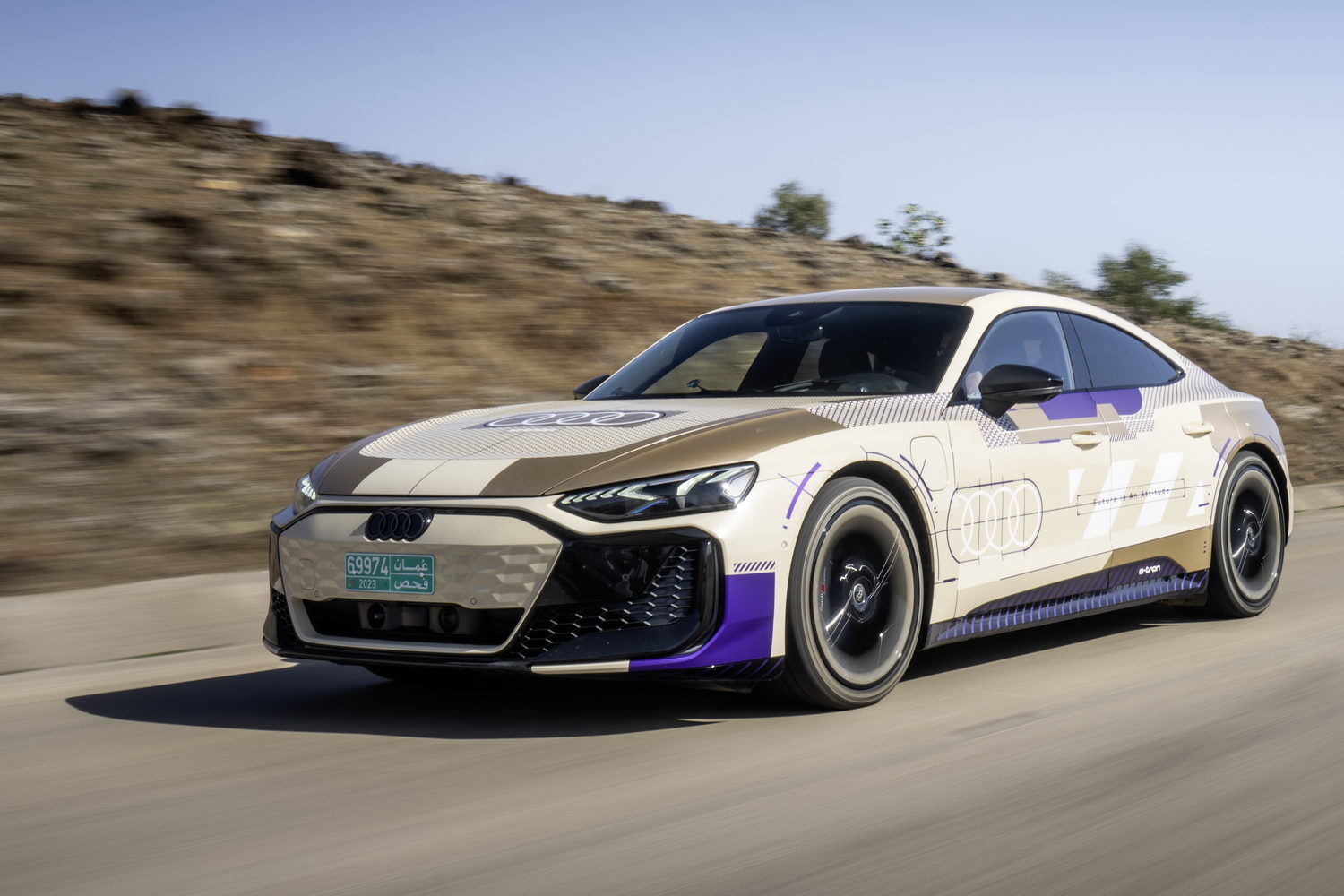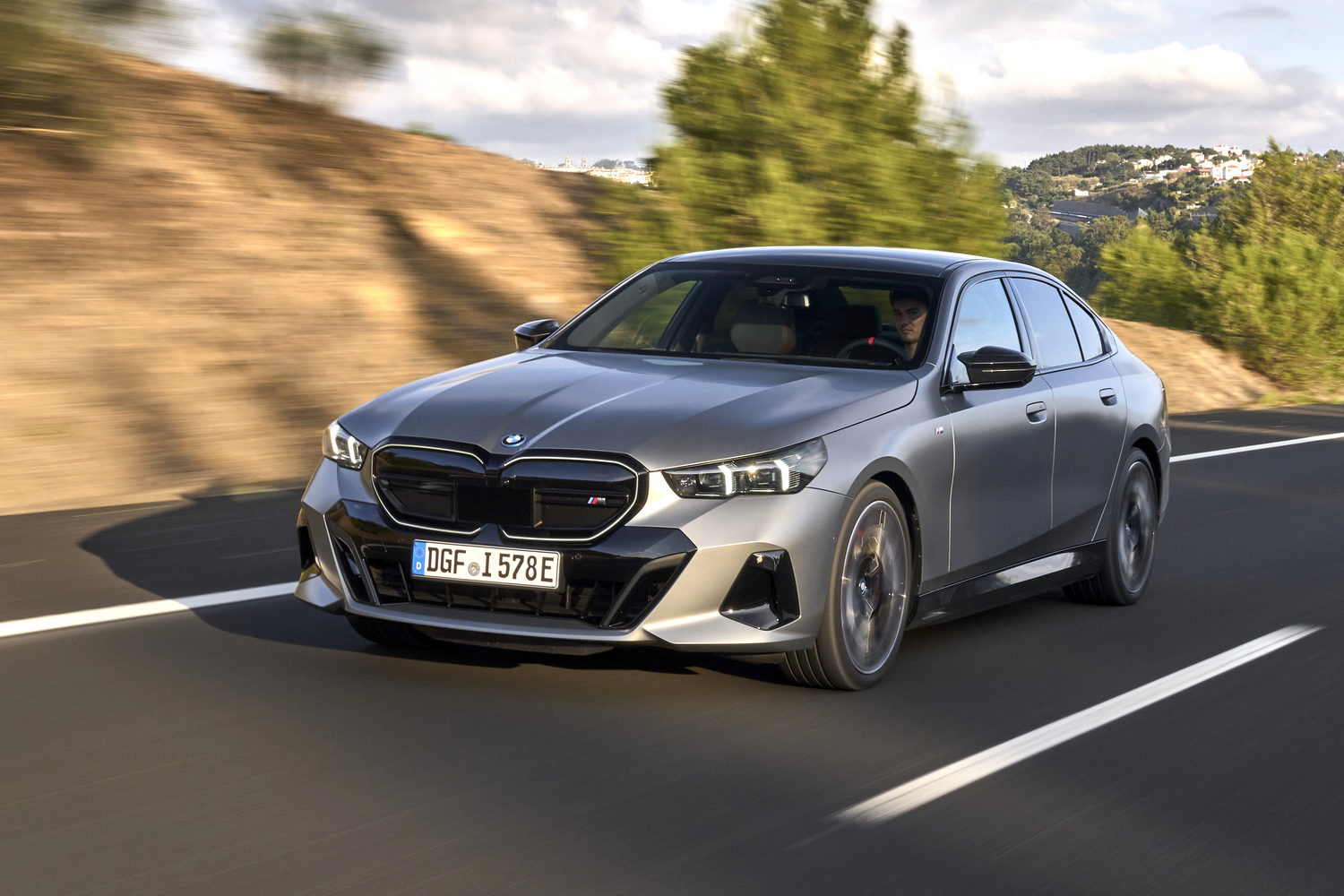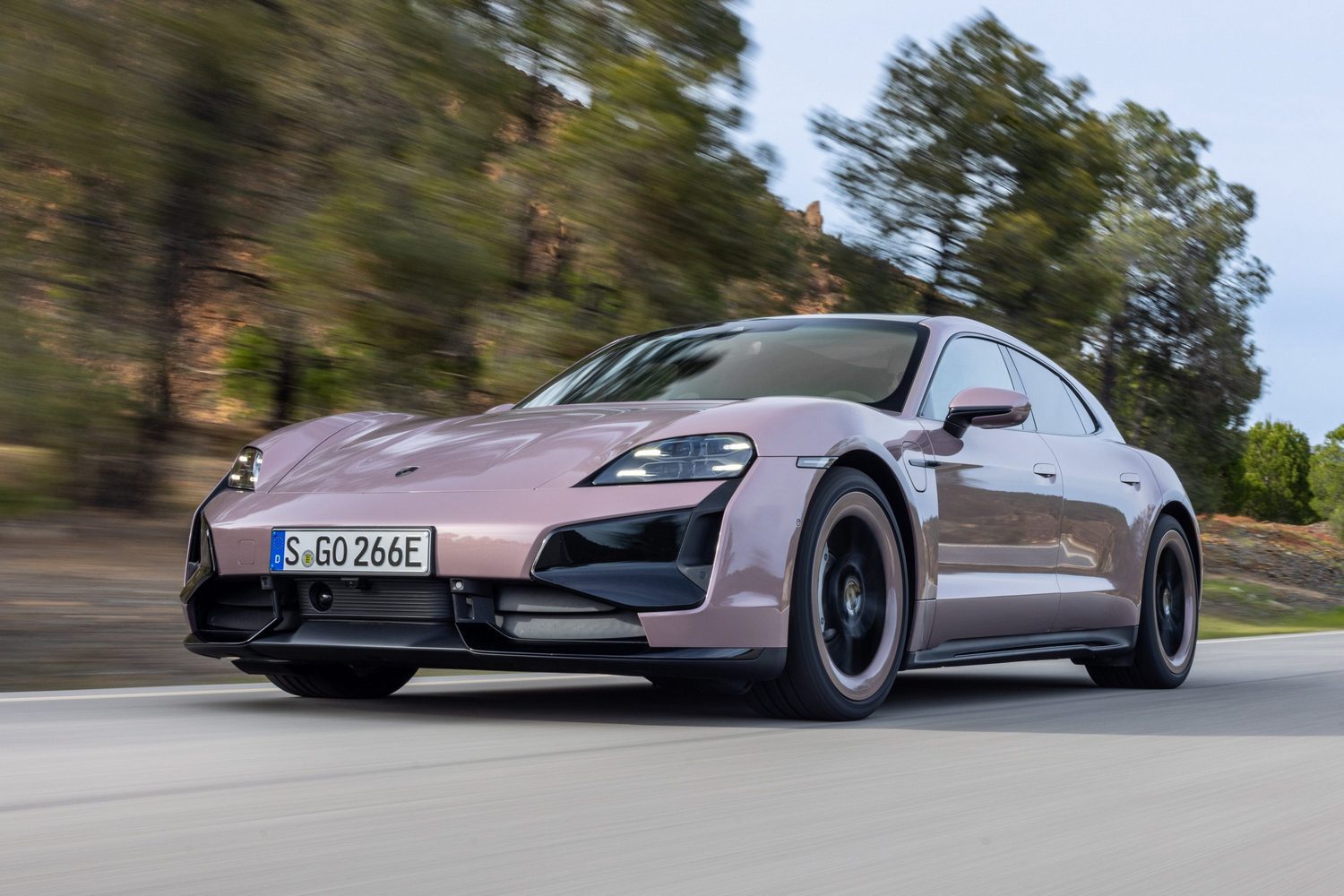The remit of the Mercedes ‘EQ’ range was perfectly encapsulated by the electric EQE saloon. Its maker put huge effort into developing a car in the executive class (think E-Class-ish) that was optimised for maximum range. That explains its curvy appearance, shaped by a desire for low drag through the air. It’s quite a likeable car aside from that, even if it isn’t as spacious as the Mercedes E-Class proper.
To give the EQE an image and performance boost, it was handed over to the AMG division. Mercedes-AMG cars should not be confused with the hordes of “AMG Line” vehicles on the road representing nothing more than a sporty looking trim. But how will AMG turn a sensible EV like the EQE into something that stands up to comparison with its famed V8-engined monsters of old? We’ve tried the entry-level AMG variant, the EQE 43 4Matic, on Irish roads to find out.
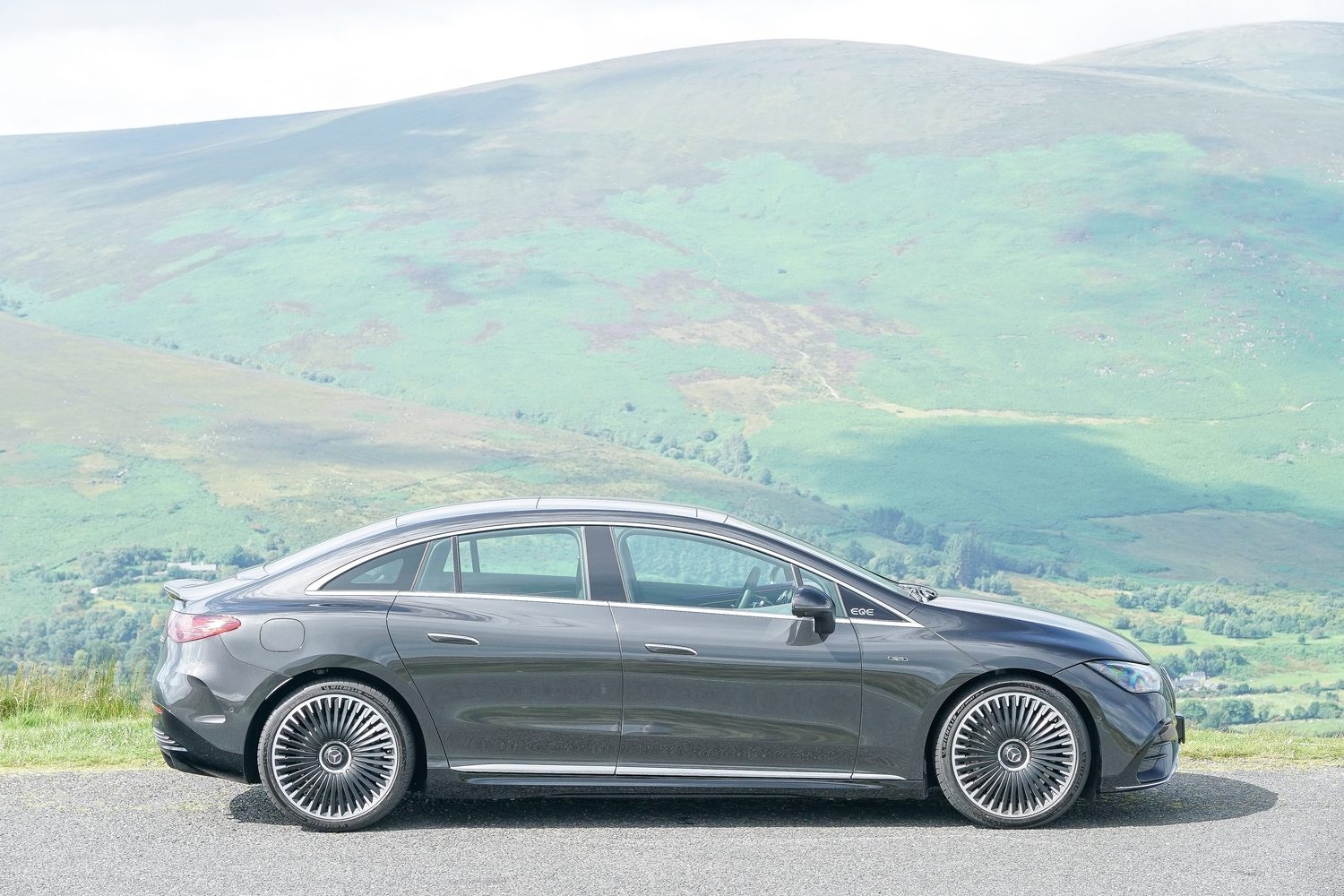
How AMG makes the EQE 43 one of its own
The new-car market’s gradual switch to electrification means that Mercedes-AMG’s traditional naturally aspirated V8s are a distant memory, and the more recent twin-turbocharged 4.0-litre V8 looks like it’s from another era. Plug-in powertrains are now coming on stream for AMG, although the recent four-cylinder-powered AMG C 63 proved to be a bigger miss than a hit.
With full electrification comes a new way of making a performance saloon, so while V8 power is nowhere to be seen, the electric AMG models do get electric motor changes when compared with the standard EQE. There are also AMG-specific drive settings, a variable four-wheel-drive system, air suspension with AMG Dynamic Select, rear-wheel steering, a bespoke AMG-inspired cabin and subtly updated exterior. The EQE 43 certainly looks the part.
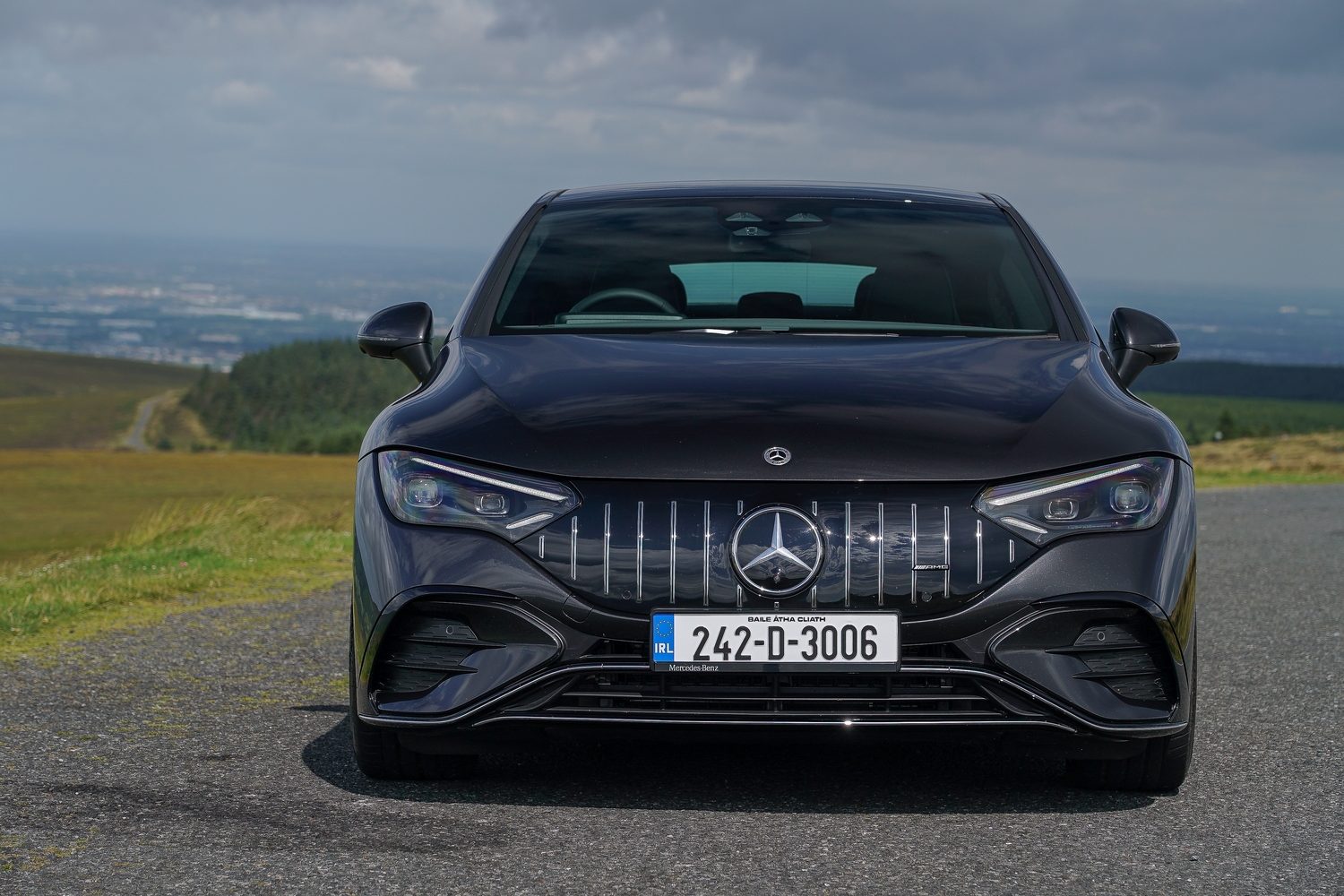
How much does the Mercedes EQE costs in Ireland?
Irish prices for the Mercedes EQE range start at €80,175, with the AMG 43 model weighing in at €118,865. For this you get a twin-motor, four-wheel-drive set-up making up to 476hp and 858Nm of torque. This is good for a 0-100km/h time of 4.2 seconds, while the car’s top speed is 210km/h - and there’s a quoted range of 503km.
On the outside, the AMG models feature a unique front-end design with the vertical bars that are familiar from the company’s combustion-engined cars, while the lower bumper’s gloss-black design is also unique. There are 20-inch wheels and low-profile Michelin Pilot Sport EV tyres at each corner, and at the rear there’s a specific apron in place of the quad exhaust pipes that were a regular calling card of combustion-engined AMG cars.
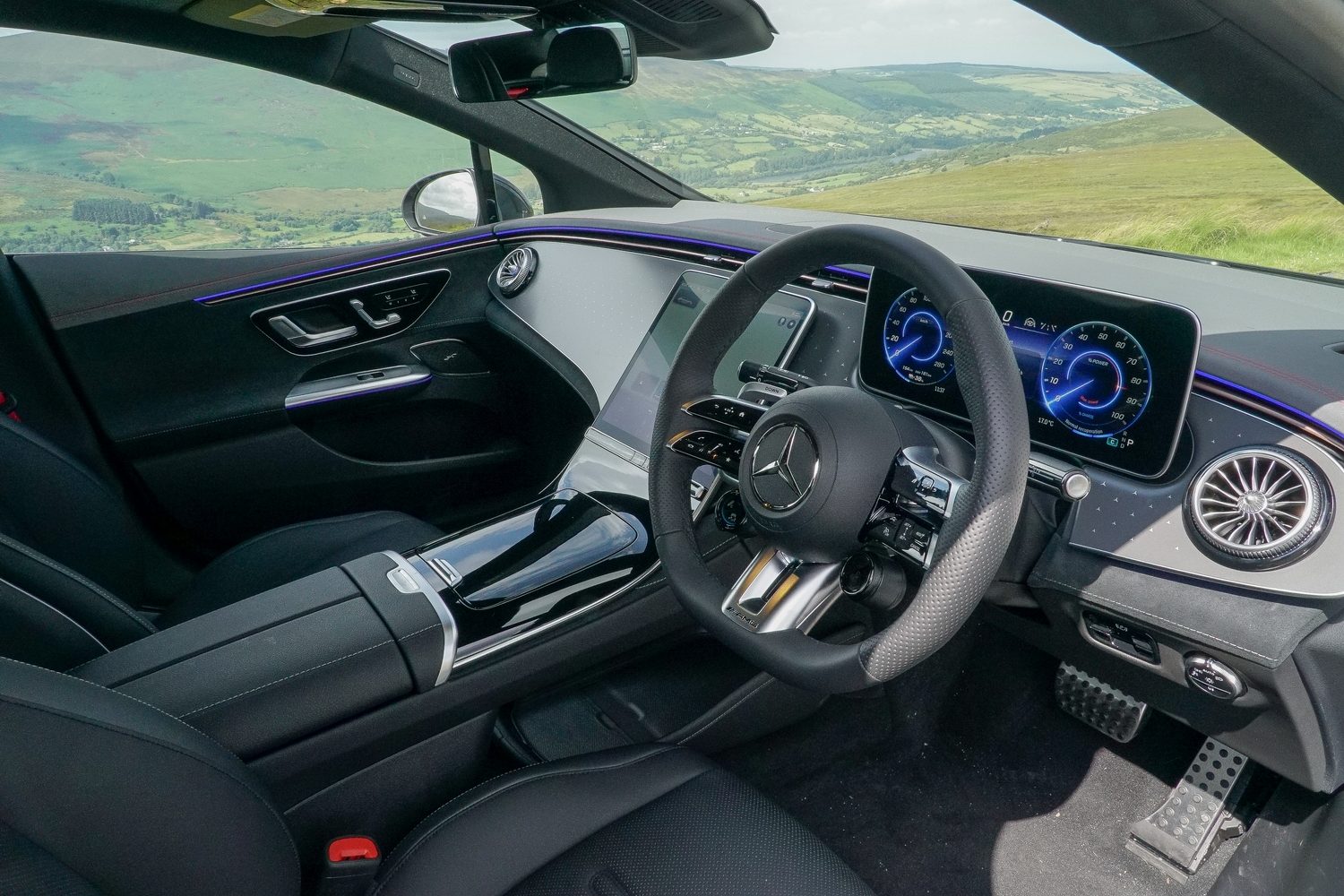
If the AMG 43 4Matic doesn’t quite hit the spot, there’s a more powerful AMG 53 4Matic+ version of the EQE on offer for an extra €6,465. This has 625hp and up to 1,000Nm of torque if you add the AMG Dynamic Plus package. All that gives the EQE a 0-100km/h time of 3.3 seconds (or a ‘sluggish’ 3.5 seconds without the extra pack), while the maximum range is slightly shorter than the AMG 43’s, at 501km. The ‘+’ at the end of 4Matic indicates additional chassis enhancements to boost handling.
A look at the Mercedes-AMG EQE 43 interior
The AMG theme continues inside with microfibre upholstery and trim added to the standard EQE’s plush interior. There’s ‘Artico’ synthetic leather upholstery, while the flat-bottomed steering wheel is trimmed in soft Nappa leather. It comes with special AMG buttons that can be programmed for specific functions, while steering wheel paddles allow for brake energy recuperation levels to be adjusted on the move.
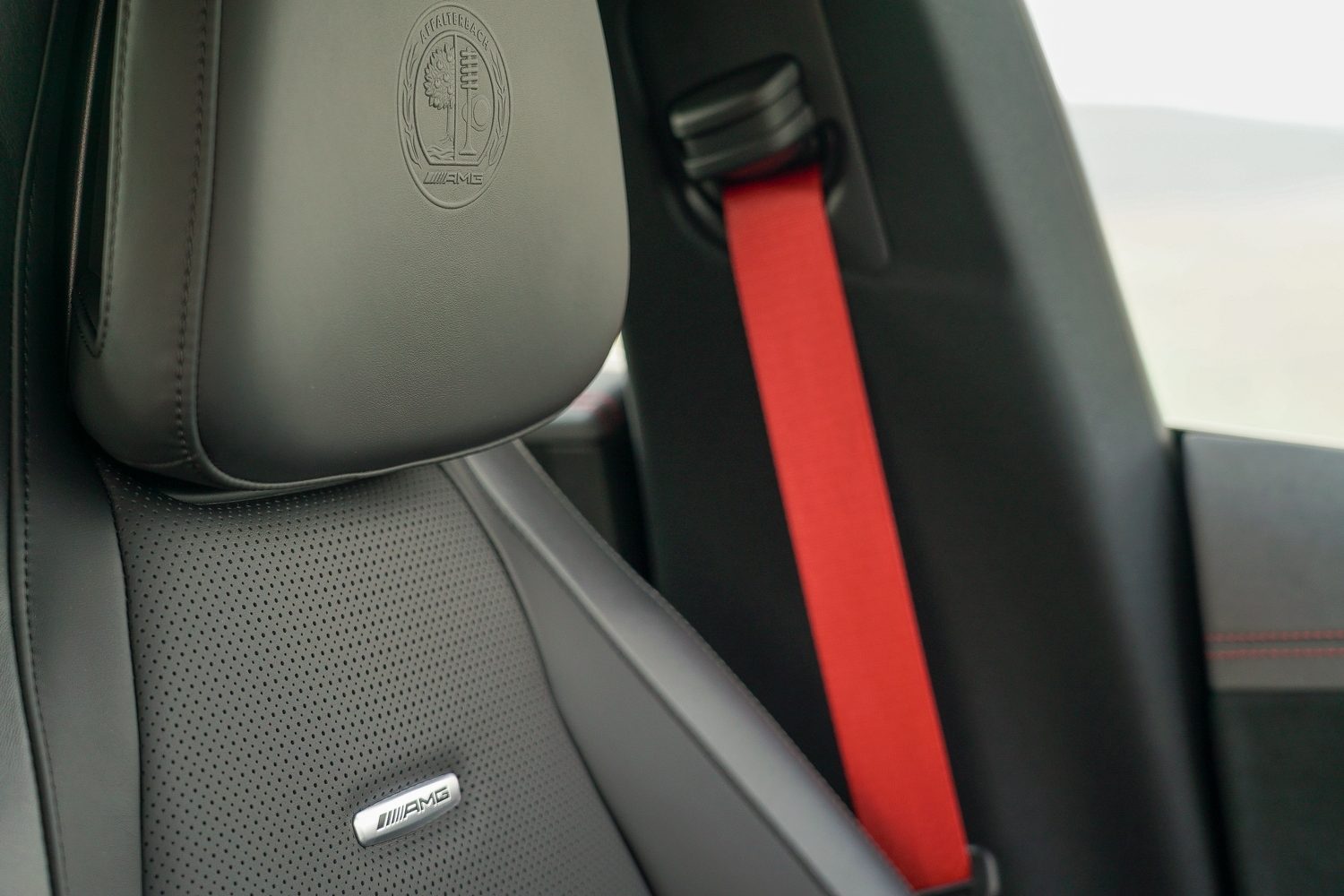
One of the main talking points of the cabin is the EQE’s optional Hyperscreen dashboard layout, although the standard system is perfectly usable, too. Hyperscreen features three individual displays - driver, central and passenger - that have been seamlessly blended into one panel. The vast central screen means that the most essential functions - including climate controls - can be on permanent display, while the high-resolution graphics look great. The MBUX control system has its quirks and doesn’t always work smoothly, but it’s still good. To be honest, the Hyperscreen is overkill, but some may prefer its appearance to the slab-sided dashboard design that is standard when it’s not fitted.
While the cabin up front is plush and feels expensive, the EQE’s overall dimensions mean it isn’t as roomy inside as its combustion-engined E-Class counterpart. The big sports seats up front and dark cabin trim mean the rear seats feel a little claustrophobic, although the space on offer isn’t bad. The electric platform means there’s good leg and foot space for passengers, although the middle rear seat does feel more like a perch between the comfortable outer chairs.
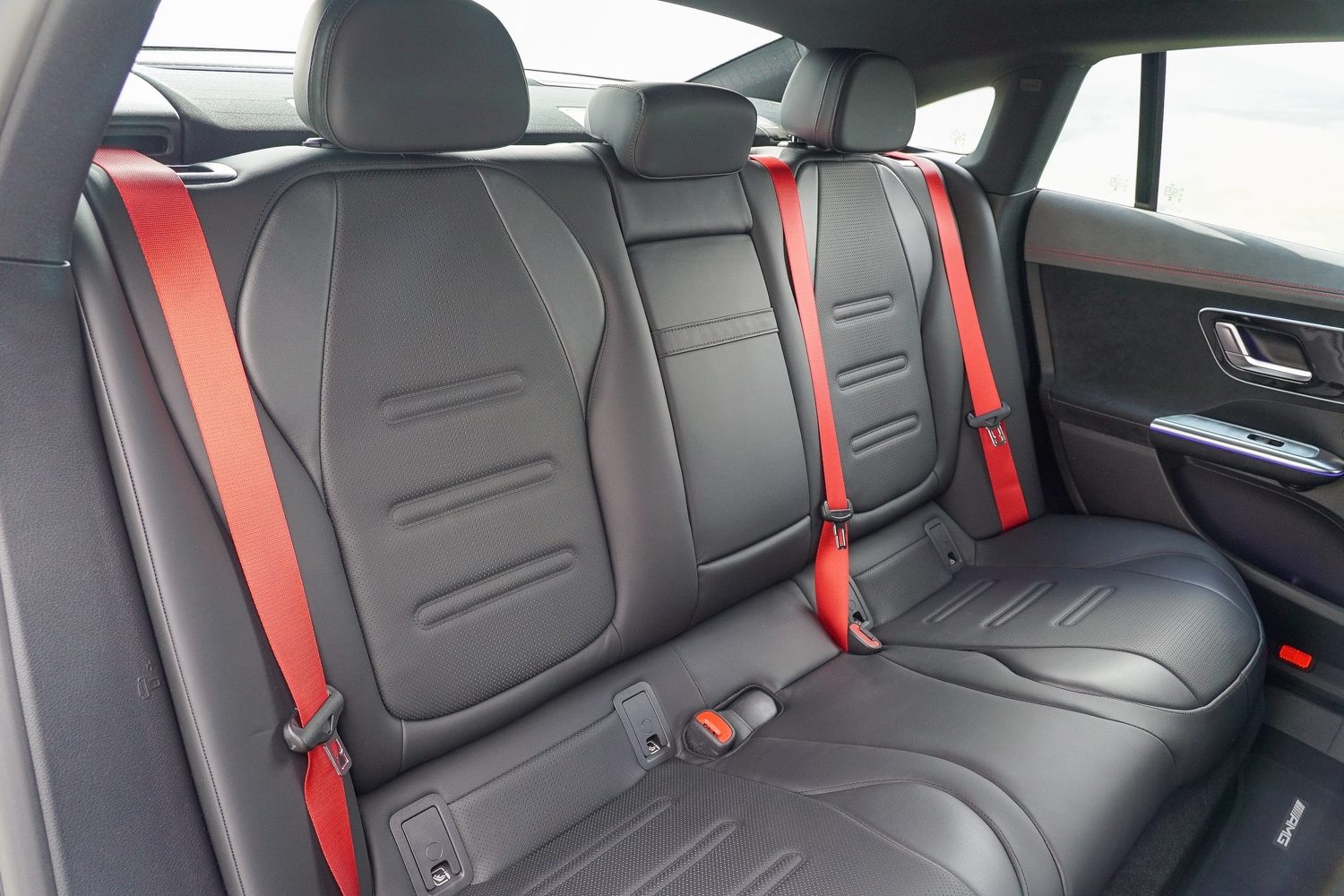
The Mercedes-AMG EQE 43 driving experience
While Mercedes claims to have completely revamped the physical suspension hardware for the AMG EQE, you know you’re in a proper AMG car when you’re faced with a massive number of driving sub-systems to tweak to your liking. A similar approach is used by BMW M in its cars. Tap the AMG section of the menu bar at the base of the touchscreen and the customisation page appears. There are five overriding options at the top - a snowflake symbol for the Slippery mode, ‘I’ for Individual; C for Comfort - the default; and then S and S+, the two Sport settings. You can go with the preset levels in each or tweak them to your liking. In Comfort, the 4Matic all-wheel-drive system is optimised for efficiency, while the rear motor is employed more for a rear torque bias in the S and S+ settings.
Drive - presumably the response and performance of the electric motors - can be set to Reduced, Moderate, Sport and Sport+ depending on which of the core settings is selected. Only in Sport+ is the full 476hp delivered without pushing the accelerator pedal into the ‘kickdown’ zone at the bottom of its travel. Not that this EQE ever feels slow.
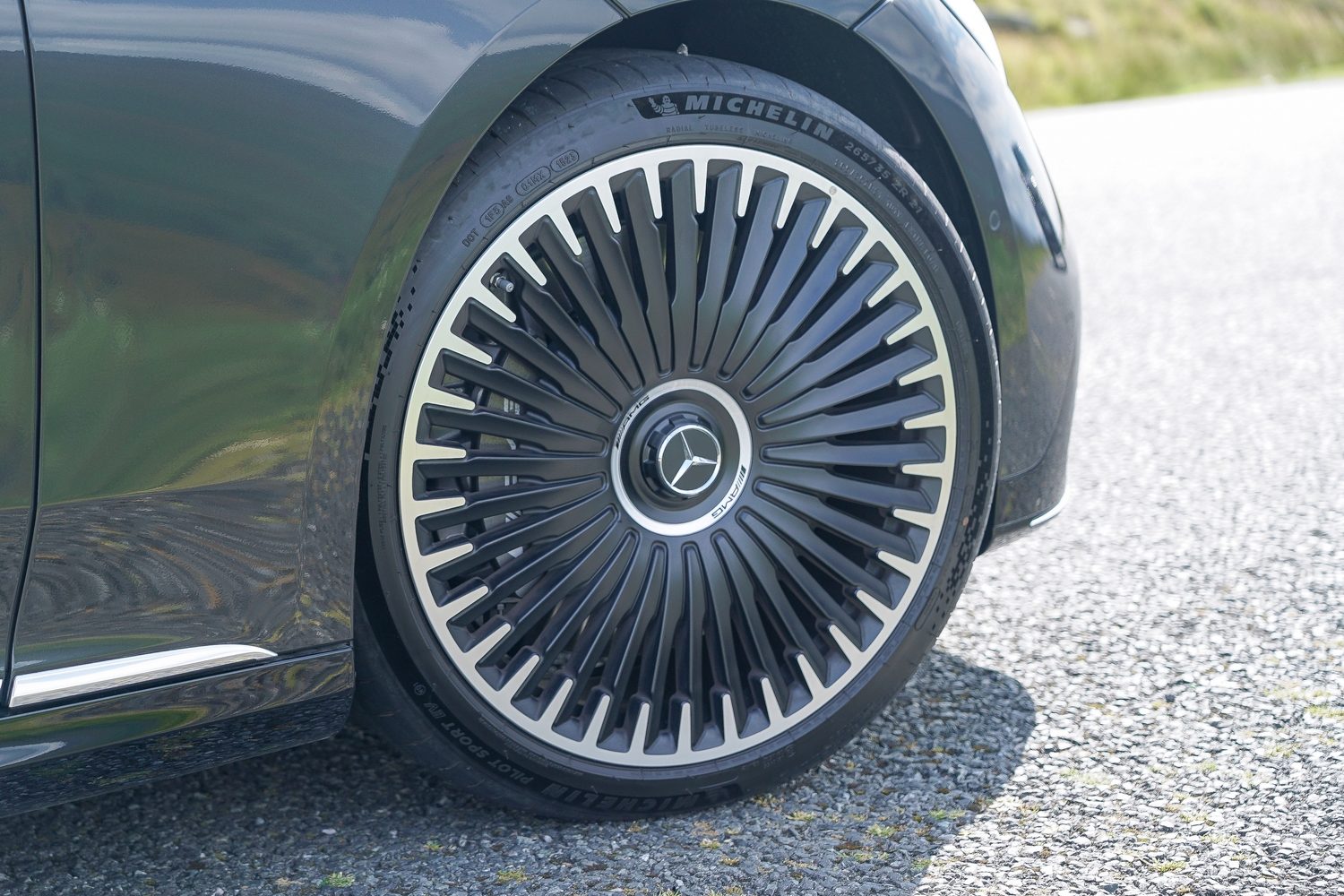
Suspension levels are Comfort, Sport and Sport+ and the adaptive damping system independently controls rebound and compression, in theory to the benefit of comfort at one end of the spectrum and control at the other. We can confirm that, while there is a firmness to the chassis at all times - probably not helped by the (gorgeous) optional 21-inch alloys fitted to our test car - the EQE is perfectly comfortable on a long journey in the Comfort setting, while the Sport mode for the suspension is a good compromise, adding notably better control through a sequence of corners. Sport+ is too firm for use on most Irish roads.
Air suspension is fitted as standard, too. The ride height drops by 15mm in the S and S+ settings, while in C mode the suspension lowers by that amount when travelling at more than 120km/h - in the name of reduced drag and hence efficiency (though it will help with stability, too). Other than choosing the driving mode, the driver can’t alter these settings.
Same story with the rear axle steering, which turns the back wheels in the opposite direction to the fronts below 60km/h - to help manoeuvring and low-speed agility - while turning them in phase at higher speeds in the name of stability. The EQE certainly is keen to change direction, making it enjoyable to thread down an interesting road. What’s more, there’s decent weighting and feedback through the steering wheel.
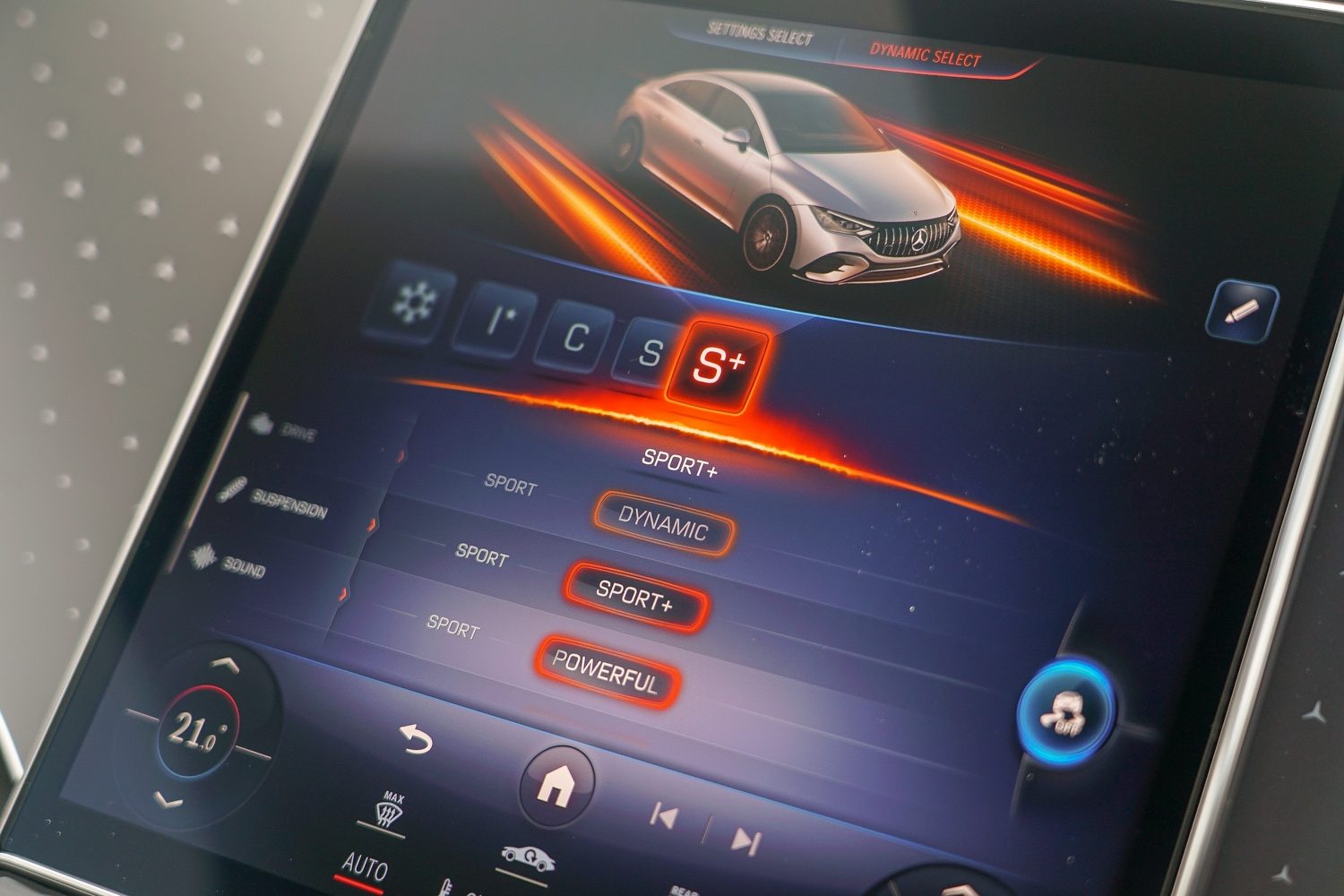
Shame the same can’t be said about the brakes. The pedal feel is inconsistent and not at all confidence-inspiring, despite AMG’s own tune to meld energy recuperation with use of the hydraulic brake system.
The driver can choose the ‘Sound’ from Balanced, Sport or Powerful, too. We found it a little contrived in truth.
Finally, there are Basic, Advanced and Pro levels for something labelled Dynamics. This is essentially how much the electronics should intervene. Separately, the stability control can be switched into a Sport setting or turned off completely. Most of our driving was done in the dry, where there was seemingly endless traction available. When provoked, the rear can get a little more involved, but this is a car that rewards smooth inputs.
You can of course just jump into the AMG EQE and drive it in its default settings with ease, as it’s no more difficult to operate than any other electric car. We’d find it difficult not to experiment with all the options, though, especially as accessing them is so easy thanks to the well-thought-out steering wheel controls. These look great and are a joy to use.
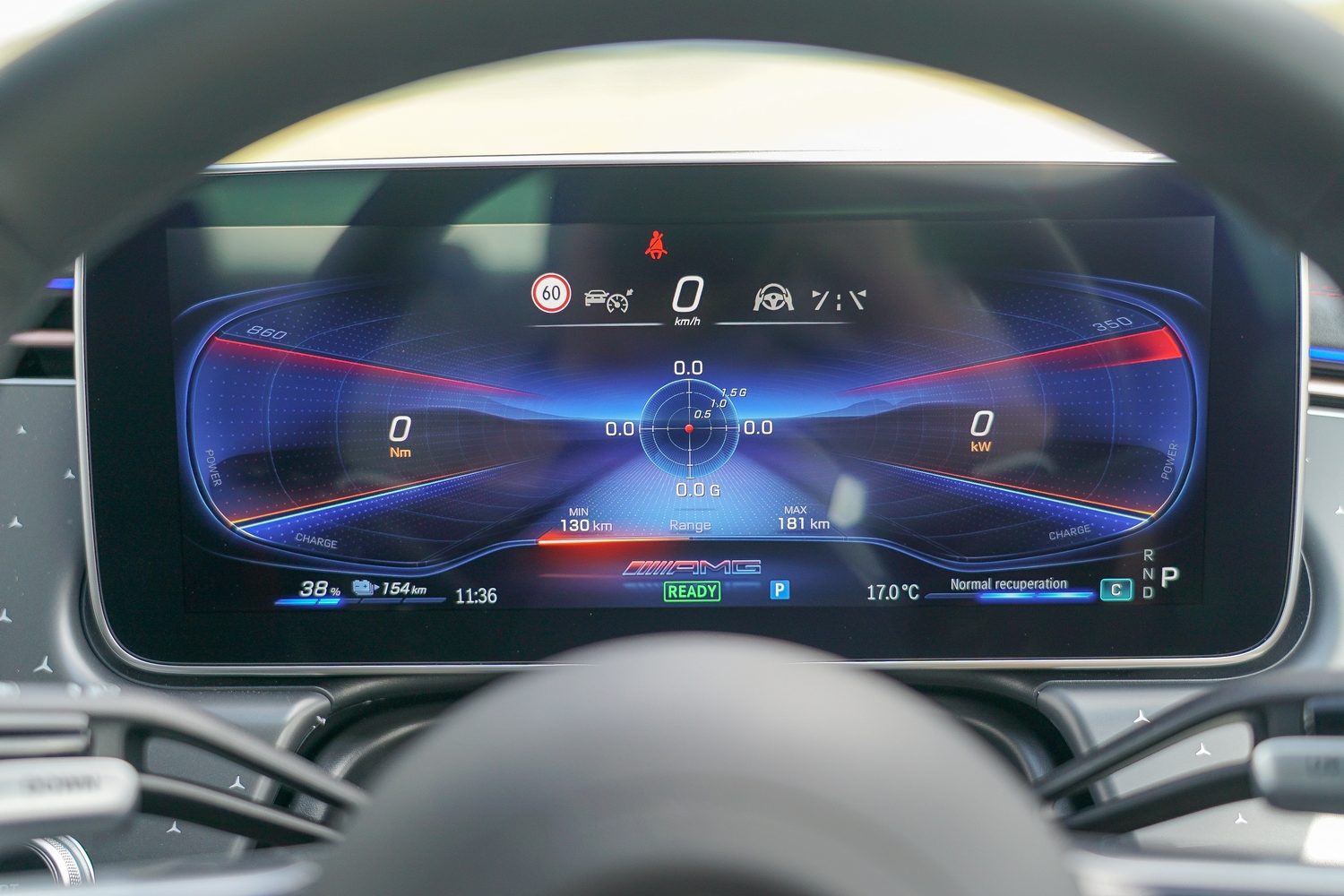
What’s the electric range of the Mercedes-AMG EQE 43?
Officially, the EQE 43 can do up to 503 kilometres between charges and in our time with the car it managed in excess of 400km with ease, despite spending a good proportion of our 700km at motorway speeds. Those figures probably won’t put prospective buyers off, but they’re not massively impressive for a car with a battery of over 90kWh usable capacity. Keeping an eye on the average energy consumption, we didn’t see it dip as low as 20kWh/100km.
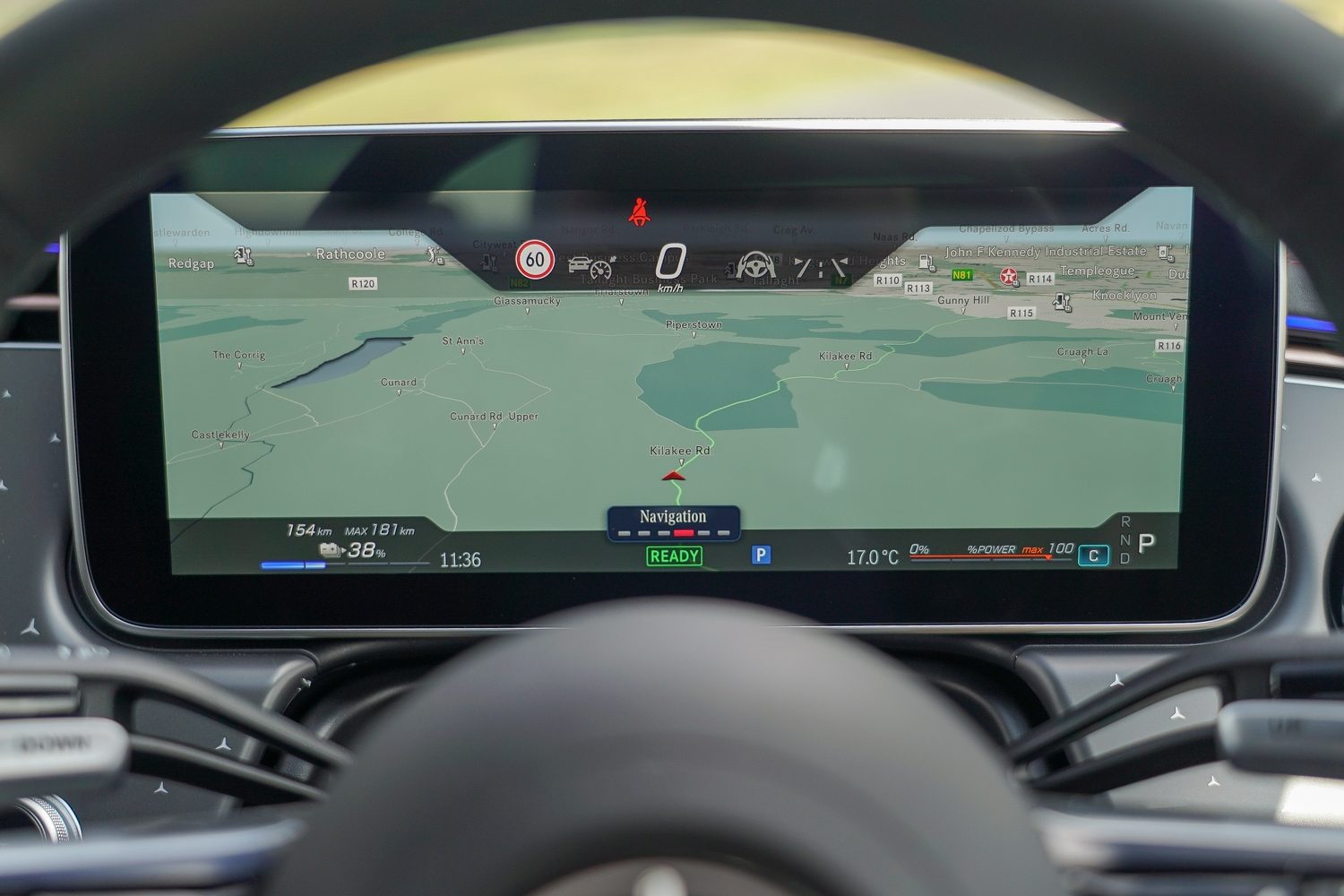
Using the car’s navigation system with a long stretch ahead worked particularly well, though, as it sent us to an Ionity charging hub en route for a quick, partial charge, allowing for a little in reserve to get back home (you can tweak the level you’re comfortable with). The maximum DC-charging rate is 170kW (which it appeared to exceed by a little at times), while it can also make good use of kerbside AC chargers with an 11kW limit.
The reasons you’d buy a Mercedes-AMG EQE 43
There’s plenty to like about the AMG EQE, but nobody in their right mind would expect it to appeal to diehard AMG fans used to thunderous V8s with tyre-melting performance and loud exhausts. The EQE is a new generation of AMG car and, while it’s perhaps not as exciting as those of old, it’s still a serious performance car with an elevated ability that keener drivers will appreciate unlocking. Look at it a different way, however, and it’s not bad value when compared to the non-AMG EQE, so some buyers are likely to choose it based on its image and equipment as much as they are its performance and handling.
Ask us anything about the Mercedes-AMG EQE 43
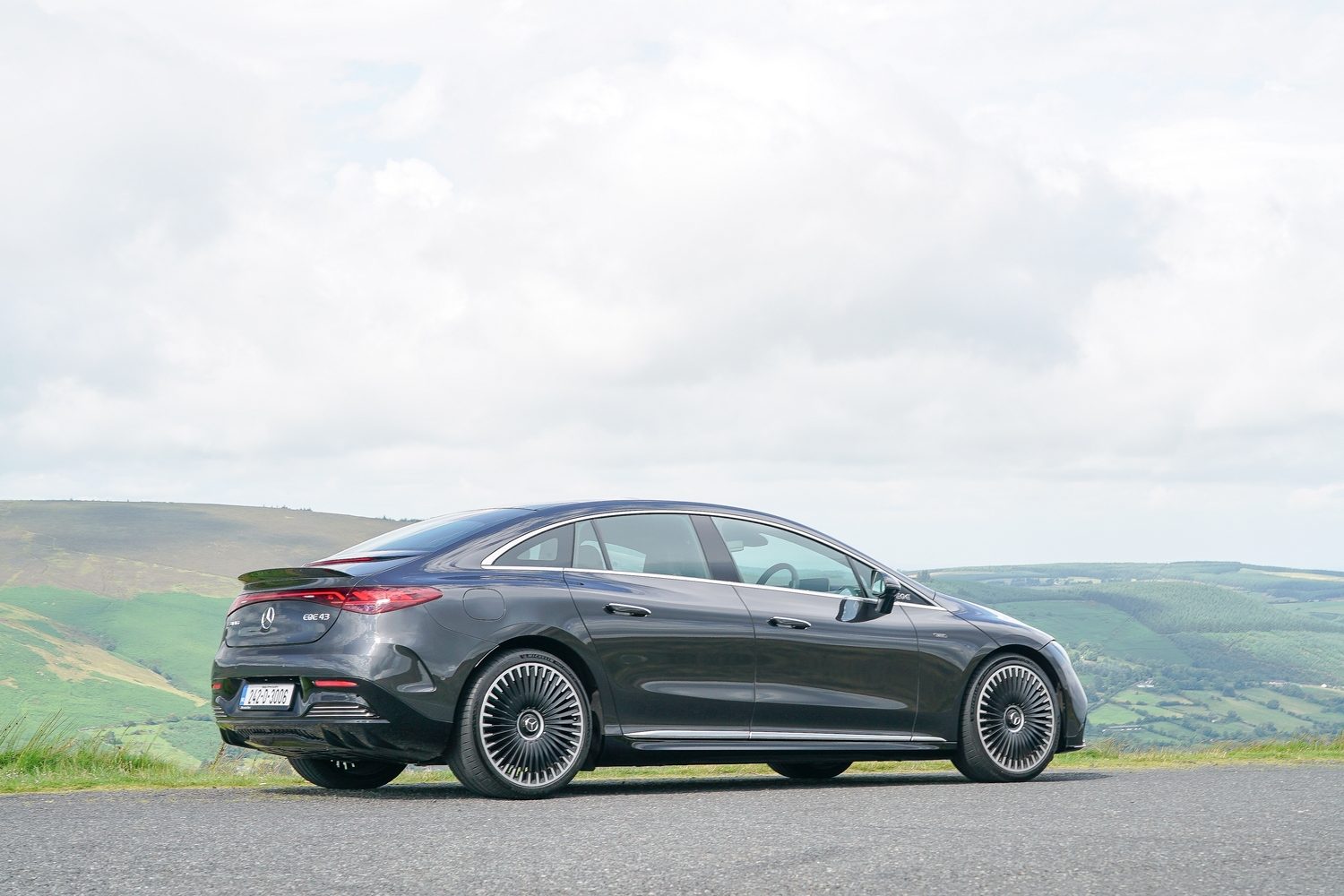
If there’s anything about the EQE 43 we’ve not covered, or you’d like advice in choosing between it and other vehicles, you can avail of our (completely free) expert advice service via the Ask Us Anything page.

